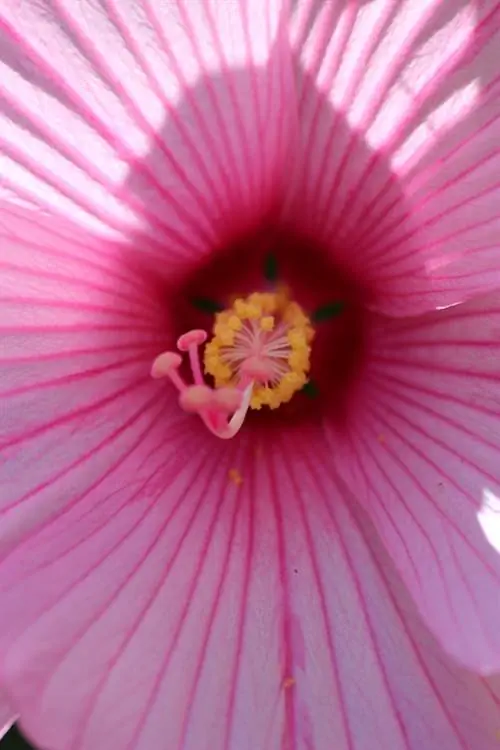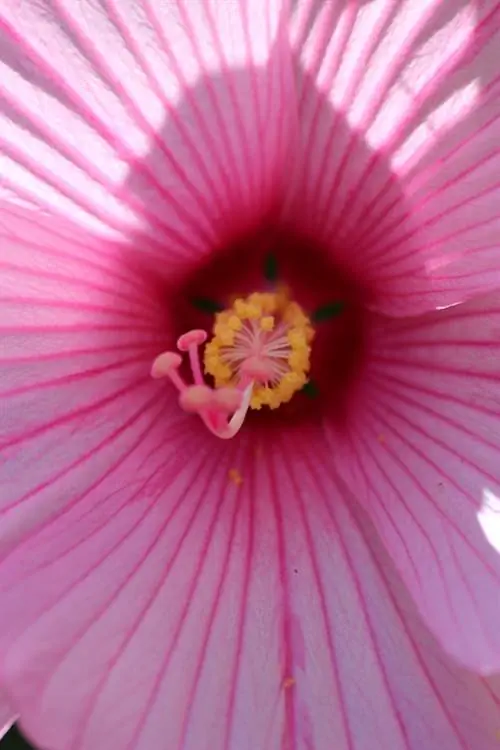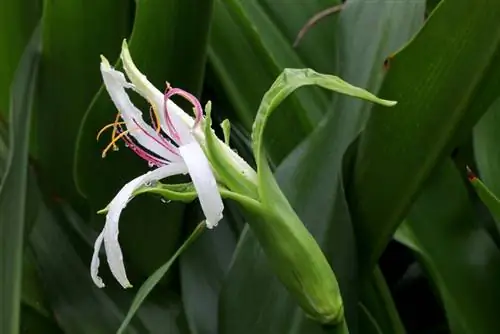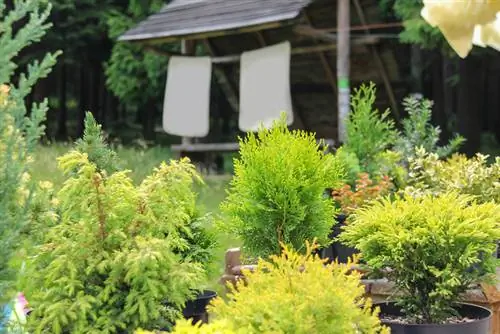- Author admin [email protected].
- Public 2024-02-02 01:04.
- Last modified 2025-01-23 11:19.
The garden marshmallow has become firmly established in our local gardens, while the Chinese hibiscus is mainly found as a container or potted plant on terraces and balconies. Both species have different wintering requirements.

How should you overwinter hibiscus?
Protect the garden marshmallow outdoors with bark mulch or brushwood, while the frost-sensitive Chinese hibiscus should be brought indoors. Store in a cool (12-15°C) and bright place in the house, water moderately and do not add fertilizer during winter rest.
The Garden Marshmallow
The hardy hibiscus species include the garden marshmallow, bot. Hibiscus syriacus (also rose marshmallow), which always impresses with its diverse flowers. The garden marshmallow has adapted well to our climatic conditions. It also tolerates frost periods with temperatures down to around -20°C relatively well.
Special winter protection is only necessary for young plants. To do this, cover the ground around the bush with bark mulch, dried leaves or pine branches.
As a summer bloomer, the hibiscus sprouts quite late, so that night frosts hardly cause any damage to the fresh shoots. However, it can happen that individual shoots freeze in winter or during late night frosts. You can simply remove these when you prune regularly; the bush will sprout again in these places.
Hibiscus moscheutus
Another hardy species is the marshmallow, bot. Hibiscus moscheutus. Unlike the garden marshmallow, it is a herbaceous plant whose above-ground parts die back in winter or are heavily cut back before winter. To protect against the winter, you can also use bark mulch, brushwood or dry leaves to cover the base of the plant. In spring the plant sprouts again from below.
Winter protection for the Chinese hibiscus in the pot
The Chinese hibiscus or rose marshmallow is usually used as a container or potted plant for the terrace. Hibiscis rosa sinensis, used, which flowers from June to Septemberin a sunny location. The rose marshmallow is very sensitive and must therefore be brought into the house before the first night frosts appear.
The hibiscus can be pruned slightly before it is brought in, which encourages new growth in spring. Indoors, the hibiscus needs a bright location. A room or stairwell with consistent temperatures between 12 and 15°C or a well-tempered winter garden is ideal. If the temperature falls below 10°C, this can mean that the plant will die.
So that the hibiscus can remain dormant and bloom vigorously again next year, you should note the following:
- check for pest infestation before bringing in, e.g. Aphids, check and fight if necessary
- remove faded and dead plant parts
- water only moderately, the soil must not be too moist
- Hibiscus does not need fertilizer when it is dormant
- Regular ventilation prevents possible infestation with spider mites
If the hibiscus begins to sprout in spring, you should water it regularly again. The hibiscus can now be fertilized approximately every two weeks with a liquid fertilizer. Now is the right time to repot the plant into a larger container. From May onwards, the hibiscus can be taken outside to a sunny and protected place.
Well-intentioned but still wrong
Even if it is well-intentioned, many “overwintering measures” are exaggerated and only harm the plant. This means that the ground around the garden marshmallow does not have to be covered with additional foil, which leads to rot and thus damages the plant. It is also not necessary to buy a fleece from the garden center; mulch and brushwood are sufficient.
The hibiscus is still blooming and is therefore allowed to overwinter in the warm living room? It's better to give your hibiscus a rest period in cooler rooms so that it can gather strength for the next shoot.
Tips & Tricks
The hibiscus needs a bright room to overwinter. If it is too dark, it could lose all of its leaves. You should therefore only consider overwintering in the basement if the basement has sufficient daylight.






